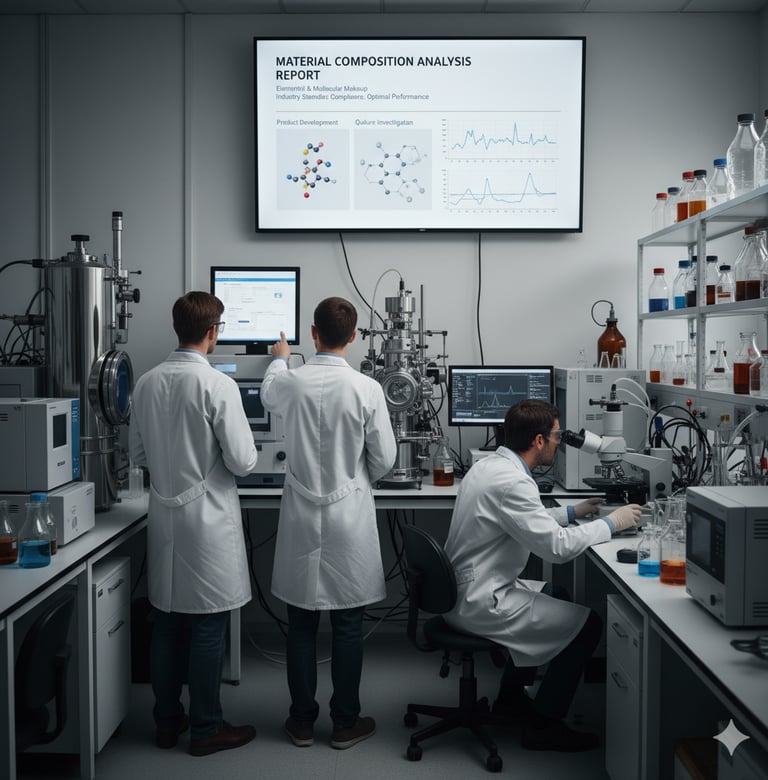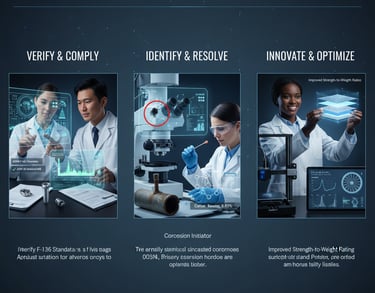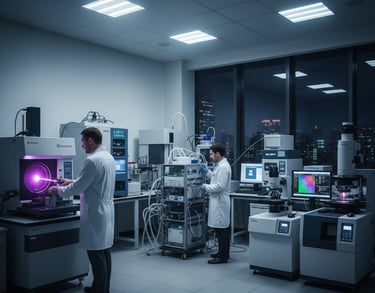
Destructive Testing (DT)
Pushing Materials to Their Limits
Uncover the true performance, strength, and failure modes of your materials and components.
At Lab Innovate, our destructive testing (DT) services are a cornerstone of product validation, quality assurance, and Failure Analysis. By intentionally testing a sample to its failure point, we provide you with the critical, quantitative data needed to ensure safety, optimize your Design & Assembly, and validate your Manufacturing Process.
Our engineering team doesn't just deliver raw numbers; we deliver a complete analysis that connects material properties to real-world performance
What is Destructive Testing?
Destructive Testing (DT) involves methods where a material, component, or assembly is subjected to stress, force, or environmental conditions until it fails or is permanently altered.
Unlike Non-Destructive Testing (NDT), which inspects a part without damaging it, the test specimen in DT is consumed in the process.
The goal is to determine a material's ultimate limits and key mechanical properties, such as:
Strength: The maximum stress a material can withstand.
Ductility: The ability to deform before fracturing.
Toughness: The ability to absorb energy during fracture.
Hardness: The resistance to localized indentation or scratching.
This data is fundamental to design verification, materials selection, and understanding why a product failed.


Our Destructive Testing Capabilities
This is the most common form of DT, used to quantify a material's response to mechanical loads.
Tensile Testing (ASTM E8, ISO 6892): The most fundamental test. We pull a sample until it breaks to determine its ultimate tensile strength, yield strength, elongation, and reduction of area.
Impact Testing (Charpy & Izod, ASTM E23): Measures a material's toughness and its propensity for brittle fracture by striking it with a weighted pendulum. This is often performed at a range of temperatures.
Hardness Testing (Rockwell, Brinell, Vickers): Assesses a material's resistance to localized deformation. Essential for checking heat treatment, case depth, and wear resistance.
Fatigue Testing: Evaluates material performance under cyclic loading to determine its fatigue life and endurance limit. This is critical for parts that experience repeated vibration or stress cycles.
Bend/Flexural Testing: Determines the ductility and flexural strength of materials, commonly used for welds, composites, and brittle materials.
Compression Testing: Measures material behavior and structural integrity under crushing loads.


Mechanical Testing
Our state-of-the-art laboratory, coupled with our in-house CNC Machining Capabilities, allows us to precision-machine test specimens and perform a comprehensive range of standardized tests
Our Comprehensive Chemical Analysis Capabilities
We employ a wide array of state-of-the-art analytical techniques, each selected for its precision, sensitivity, and applicability to various material types and analytical challenges. Our experienced chemists and metallurgists utilize these methods to deliver comprehensive and reliable data.
Optical Emission Spectrometry (OES):
Text: Ideal for rapid, quantitative elemental analysis of metals and alloys (e.g., steels, aluminum, copper). Provides precise measurements of major, minor, and trace elements.
Inductively Coupled Plasma – Optical Emission Spectrometry (ICP-OES):
Text: A highly sensitive method for multi-elemental analysis in solutions. Used for trace element detection in a wide range of materials after suitable sample preparation.
X-Ray Fluorescence (XRF):
Text: Non-destructive elemental analysis for solids, liquids, and powders. Excellent for qualitative and quantitative analysis of a broad spectrum of elements, often used for material identification and coating thickness.
Energy Dispersive X-ray Spectroscopy (EDS/EDX) (often paired with SEM):
Text: Provides elemental composition at a micro-scale, often integrated with Scanning Electron Microscopy (SEM) for spatially resolved analysis of surfaces, particles, and inclusions.
Combustion Analysis (C, S, O, N, H):
Text: Precisely determines the content of carbon, sulfur, oxygen, nitrogen, and hydrogen in various materials, critical for understanding mechanical properties and material grades.
Fourier-Transform Infrared Spectroscopy (FTIR):
Text: Identifies organic compounds and functional groups in polymers, plastics, lubricants, and coatings. Useful for material identification, contaminant detection, and degradation studies.
Gas Chromatography-Mass Spectrometry (GC-MS):
Text: Separates and identifies volatile and semi-volatile organic compounds. Essential for analyzing gases, liquids, and extracts from solid materials, often used in failure analysis and contaminant identification.
Atomic Absorption Spectroscopy (AAS):
Text: Highly sensitive for the quantitative determination of individual metallic elements in solution.


